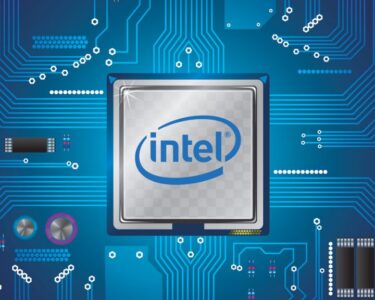July 28 (Reuters) – In a surprising turn of events, Intel, the American chip industry giant, witnessed a momentous 7% surge in its shares on Friday, one day after delivering an unexpectedly robust quarterly report. The company’s stellar performance marked a much-needed turnaround in fortunes following a prolonged period of struggles due to declining PC sales and fierce competition in the data center market.
The second-quarter earnings report from Intel was nothing short of a pleasant shock to investors. Not only did the chipmaker manage to post a surprise profit, but its strong earnings and margin forecasts also hinted at the impending end of the personal computer market slump. The optimistic outlook sparked a substantial rally not only in Intel’s stock (INTC.O) but also in the broader chip sector (.SOX).
At its current price of $37, Intel is poised to add approximately $10 billion to its market value, a figure that has already surpassed Wall Street’s median target of $35. This remarkable development came to light as at least 21 brokerages raised their price targets on Intel, according to Refinitiv.
Industry experts echoed the sentiment that Intel’s long-awaited turnaround is now finally in motion. Glenn O’Donnell, the research director at Forrester, expressed his confidence in the company’s future prospects and predicted a similar trend for most other chipmakers. This optimistic sentiment was reinforced by Intel’s positive results, which in turn lifted the stocks of rivals Advanced Micro Devices (AMD.O) and Nvidia (NVDA.O) by 3.2% and 2.3% respectively. Qualcomm (QCOM.O) also enjoyed a 2.6% increase in its stock value.
While Intel has been a titan in the American chip industry for years, it has faced stiff competition from the likes of Taiwan’s TSMC and Nvidia, especially in terms of margins and market value. The downturn in the PC market and intense rivalry in the data center market took a toll on Intel’s business. Although the company’s shares have experienced a 30% rally this year after a tough 2022, this growth has paled in comparison to the remarkable three-fold rise witnessed by Nvidia. The latter achieved the historic milestone of becoming the first chipmaker with a trillion-dollar market value in May, largely fueled by its strong presence in the booming artificial intelligence (AI) market.
Intel’s comparatively modest presence in graphics-processing units and other AI specialist chips meant that it missed out on the tremendous growth in the AI sector. The flourishing AI market bolstered Nvidia’s position, while Intel struggled to catch up. Despite this setback, the recent earnings report from Intel and other chipmakers like Samsung (005930.KS) indicated that the glut in the smartphone and PC markets might finally be coming to an end. However, the outlook for demand from customers outside the AI industry remains somewhat gloomy.
Intel’s AI and data center business did see a contraction of 15% in the recent quarter. CEO Pat Gelsinger noted that a glut in the server central processing units market is expected to persist until the second half of the year. Nonetheless, he remained positive, stating that Intel has already secured enough customer orders to sell at least $1 billion worth of its AI chips through 2024.
Despite this positive development, analysts at Rosenblatt Securities remain cautious, stating that they currently do not view AI as an investable theme for Intel. This suggests that Intel may still have some ground to cover before it can compete head-to-head with AI-focused chipmakers.
In terms of valuation, Intel currently boasts a 12-month forward price-to-earnings ratio of 31.10, which is lower than Nvidia’s 43.26 but higher than the industry median of 19.95. This indicates that while investors are showing increased confidence in Intel’s future, there is still room for growth and improvement in the company’s financial metrics.
In conclusion, Intel’s recent resurgence in the chip industry has instilled a renewed sense of hope among investors and analysts alike. The company’s robust quarterly report, along with positive earnings and margin forecasts, suggests that the worst may be behind it. As Intel continues to focus on expanding its presence in the AI market and addressing the challenges in the data center segment, it remains to be seen whether it can sustain its upward trajectory and reclaim its position as a dominant force in the ever-evolving semiconductor landscape.





